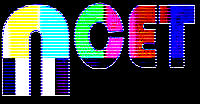Larry's extraordinary creativity as an electronics designer was impressively demonstrated in the Templeton Video Mixer. Larry was serving as a consulting engineer to KQED-TV in 1970, when Paul and Anna Turner, thinking that Larry might be interested in the goings-on at the Natrional Center, suggested that he visit and explore a possible relationship there. He readily realized the severe limitations of the equipment being used, and after meeting and consulting with the staff and artists, proceeded to develop a concept for what became the Templeton Mixer.
Larry was offered a fellowship at NCET under which he pursued the design and construction of the original mixer console. The equipment proved so wonderfully successful that Larry decided to market it through his own company Vista Systems. The Templeton Mixer was one of the core tools used by almost all of the center's video artists throughout the life of the National Center.
It consisted of three modules: the multi-level keyer (or quantizer), the colorizer, and the mixing module proper. It was capable of producing truly remarkable imagery, and its possibilities seemed almost endless. Outside of the works produced through Stephen Beck's Direct Video Synthesizer, almost all NCET's art output involved, in some way, Larry's mixer.
This module (the colorizer) was one unit in the two complete mixer sets later produced by Rick Davis for Larry's company. One set, at least, seems to still be in existence and in operating condition (for current [2008] photos of the mixer and its output, see the Templeton Mixer page). |



